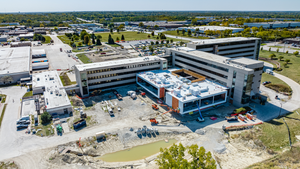Sounding Board: Think small
January 1, 2018
Declining home ownership has more people living in tighter quarters. Retailers and manufacturers need to adjust. If there is one thing synonymous with the “American Dream” it has got to be home ownership. It is right up there with “all men are created equal” or “life, liberty and the pursuit of happiness” and one of the great pillars of consumerism. As we all know, that part of the dream has become a nightmare for many, characterized by plummeting home prices, ballooning payments and escalating foreclosure rates on properties whose mortgages far outweigh their value. Clearly, builders of new homes will have to compete with foreclosures and short sales clogging up the pipeline with excess inventory. I do not think there is anyone in retailing who does not see the analogy. Despite low mortgage interest rates designed to stimulate sales, the old practice of lending with little or no money down is gone for now. The problem is whether many potential buyers can afford a 20% to 25% down payment on even a modestly priced home. The big question is what this means to retailing. Conventional wisdom says that retailing follows the rooftops. Therefore, the lack of home sales—new or otherwise—is likely to impact long-term commercial growth. This is not the end of the road, but we are seeing a significant detour. Recently, housing starts—a key indicator of economic activity—rose a hefty 24.3% compared to a year ago. But unlike previous gains, new construction consisted primarily of apartment buildings, townhouses and other multi-family dwellings, evidence of rising demand for rental housing across the country. From all indications, this construction is not only taking place in urban areas but in suburbia and smaller towns where single-family homes were once the norm rather than the exception. Developers, as they say in the trade, are now “moving dirt” in a new direction. Major home builders such as Lennar and K. Hovnanian are shifting to multi-family projects and many small builders are getting into the apartment business. The challenge for retailing—particularly supermarkets—is adapting to the specific needs of people who live with less space. To some degree, and with varying degrees of success, retailers are learning that the world of the city or apartment dweller is a unique one. The old strategy of “stack it high and watch it fly” may not work too well. Less space means people have smaller and fewer cabinets to stock and it is unlikely that valuable closet space will be converted into a pantry. Additionally, refrigerators and freezers are generally smaller by several cubic feet and the free-standing freezer, some big enough to hold a body and once a fixture in suburban basements, has pretty much gone the way of the dodo. This means smaller, easy-to-store packages may take precedence over bulk buys—no matter how good the price. The cooking environment is different as well. There is less counter space for prep work and stoves and ovens—even microwaves—have been downsized. The result is that consumers may shy away from complex, multi-ingredient recipes and cooking methods in favor of simpler, more convenient fare. The fact that grocers are going to be faced with a denser population of apartment dwellers with limited storage space rather than sprawling subdivisions of single-family homes may be a great opportunity for those that spot this trend early. Less storage space for groceries and perishables means shoppers may buy less per visit. But with the right merchandising this can be offset by more frequent visits—especially among consumers with families. The bottom line? More selling opportunities in a variety of categories. Additionally, experts believe that apartment dwellers, particularly renters, are more convenience-oriented because they are often less mobile and therefore more likely to shop closer to home. The message here is keep an eye on new developments and go to contract as soon as possible to sew up prime real estate. Additionally, it is cheaper for developers to build apartments than single-family units and this may have an impact on the cost of surrounding commercial real estate. In the case of multi-use developments it is a matter of literally getting in on the ground floor. As such, some conventional grocers may have to develop smaller formats or new store designs in order to utilize ground-floor commercial space. Overall, what we are going to see in the next several years is a boomlet in residential construction, especially in the South and West, and any area that is seeing an influx of returning military personnel and their families. Just remember it is 2012 not 1952.
About the Author
You May Also Like




